 Louvre Map: A Room-by-Room Navigation Guide To Plan Your Perfect Visit
Louvre Map: A Room-by-Room Navigation Guide To Plan Your Perfect Visit
Originally a medieval fortress and later a royal castle, the Louvre has worn a few hats over the years. The one you’ll know…

The Louvre Museum isn’t just home to the woman with the world’s most famous smile. Sure, millions flock to catch a glimpse of the Mona Lisa each year, but they all end up staying for the more than 380,000 works that make up the world’s largest art collection.
Join us as we explore 10 extraordinary works — not just the Mona Lisa — that showcase why the Louvre remains the most visited art museum in the world.
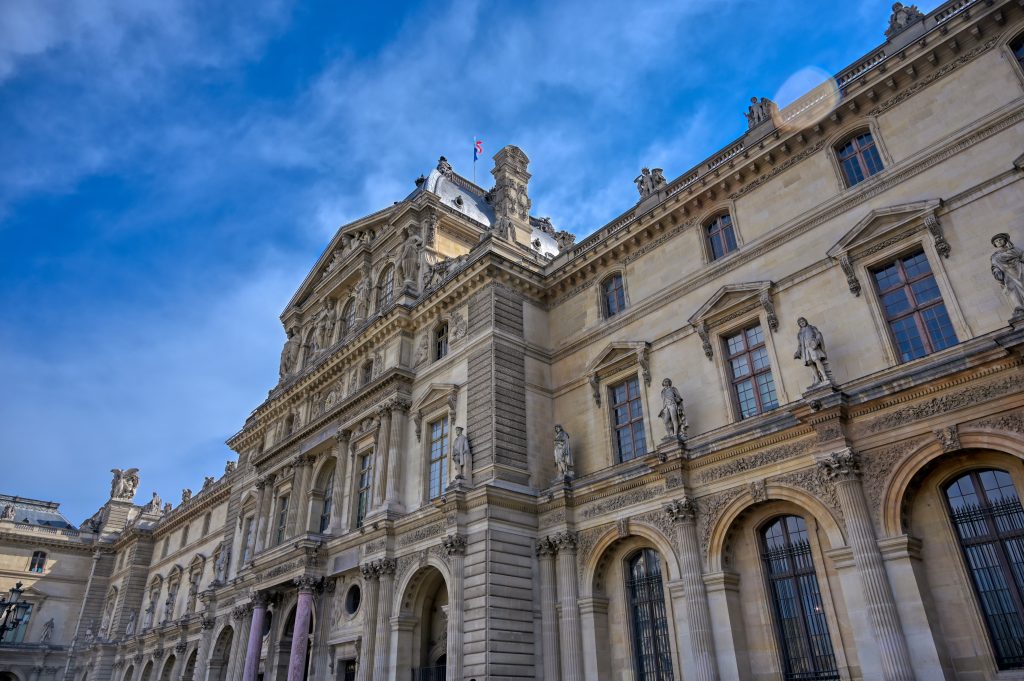
Before it became the world’s premier art museum, the Louvre served as a fortress and royal residence for over 700 years. Built in the 12th century, it transformed from a medieval fortress to a Renaissance palace before finally opening as a museum in 1793 during the French Revolution.
Today, its iconic glass pyramid entrance, designed by I.M. Pei in 1989, serves as a perfect symbol of how the museum bridges classical and contemporary worlds.
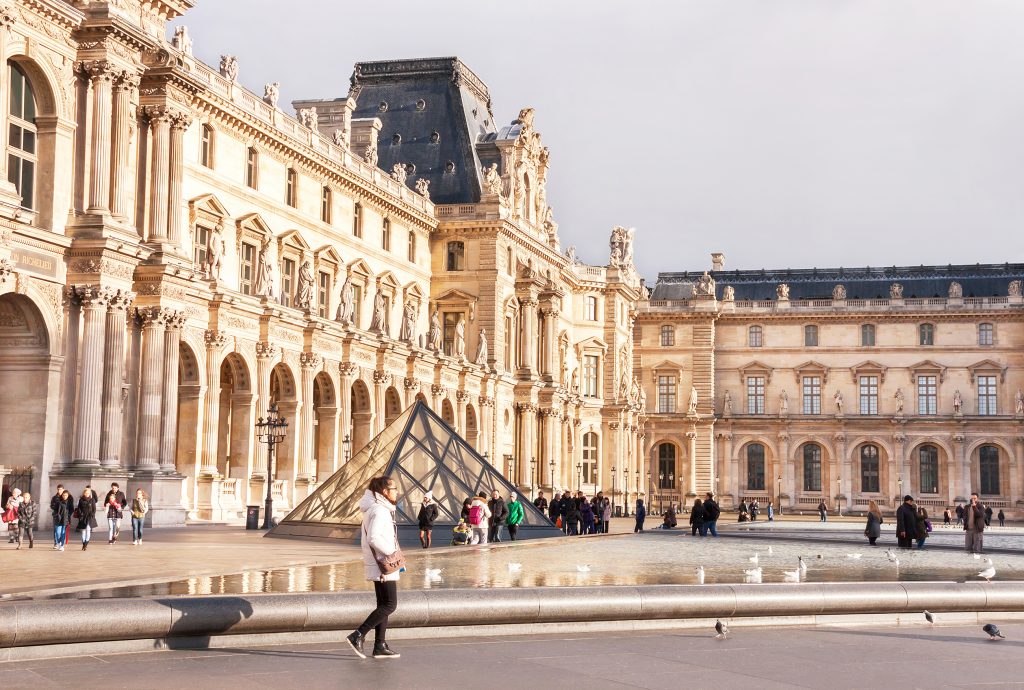
The Louvre offers an unparalleled journey through human creativity and expression. Here, every corridor tells a story, every gallery holds surprises, and every visit reveals new details in familiar works.
While virtual tours and art books can introduce us to these masterpieces, standing before them in person creates an irreplaceable connection to history’s greatest artists and their visions.
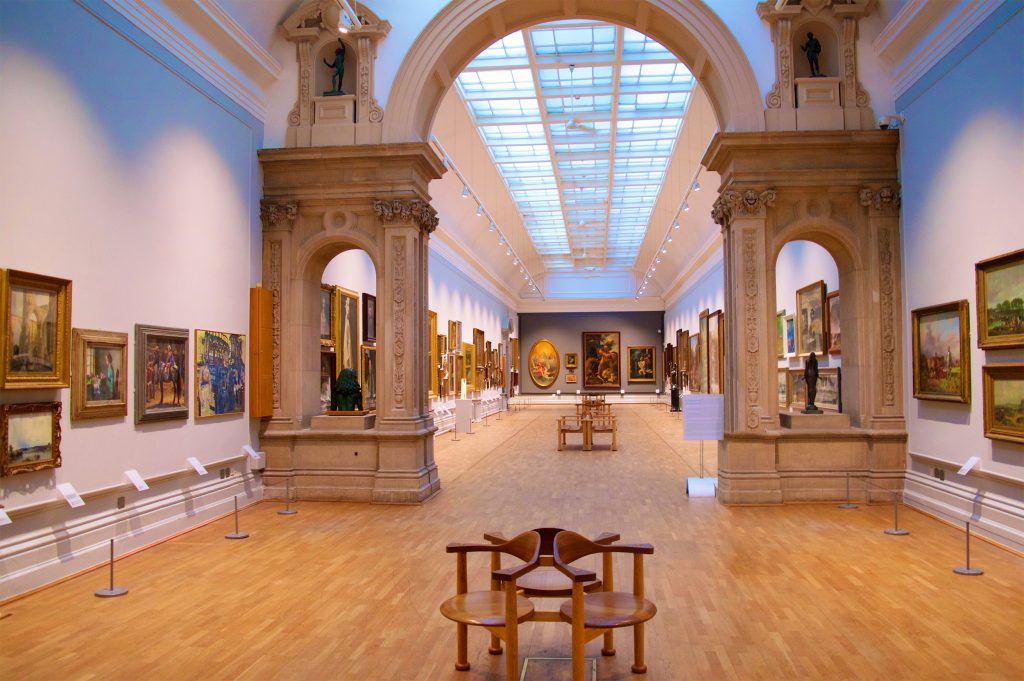
Let’s explore ten masterpieces that showcase the breadth and depth of the Louvre’s collection. Each work represents not just artistic achievement but pivotal moments in human history and culture.
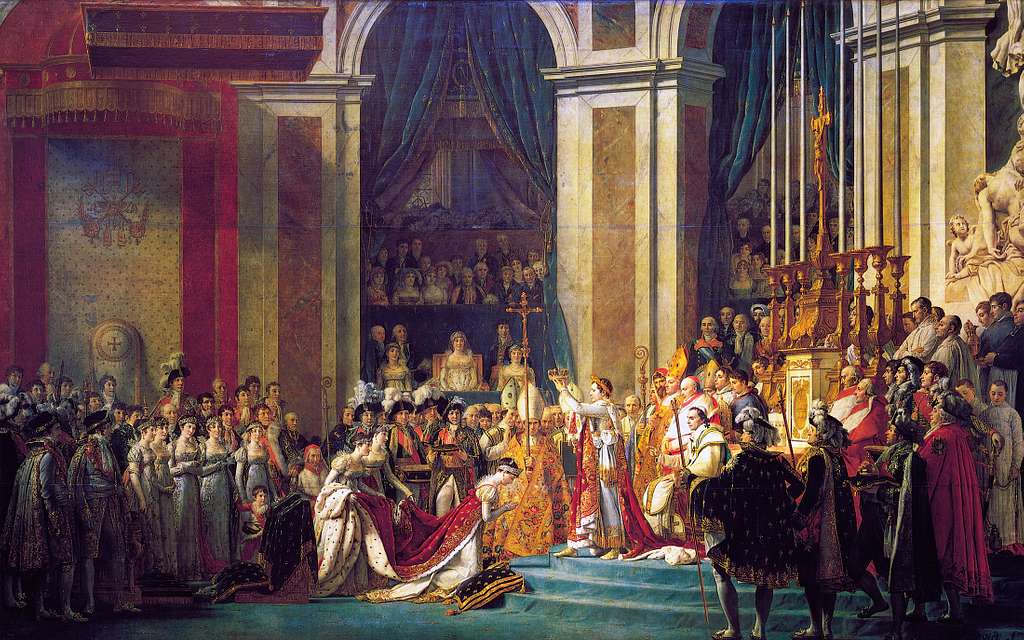
This massive canvas (20 feet by 32 feet) captures the moment Napoleon crowned himself Emperor in 1804. David’s masterful composition balances historical accuracy with political propaganda, showing Napoleon crowning his wife Josephine while Pope Pius VII watches.
The painting’s attention to detail extends to the intricate embroidery on Napoleon’s robe and the individual faces of over 100 spectators – many of whom posed for David personally.
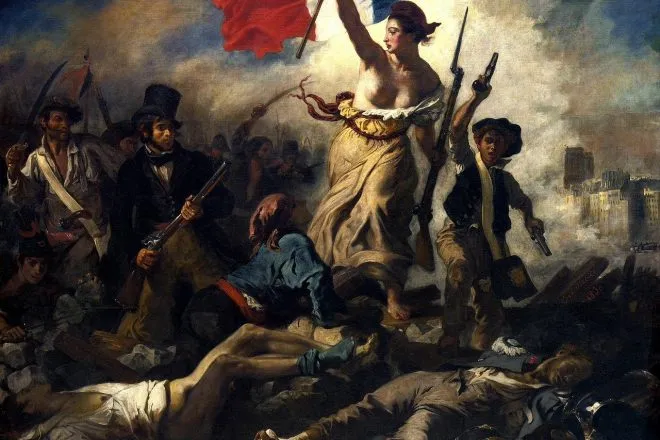
Perhaps the most famous painting of the French Revolution, this work shows Liberty personified as a woman raising the tricolor flag while leading citizens over the barricades.
Delacroix combined allegory with gritty realism, depicting both the heroic ideal of revolution and its bloody reality. The painting became a powerful symbol of democracy and has inspired countless political movements worldwide.
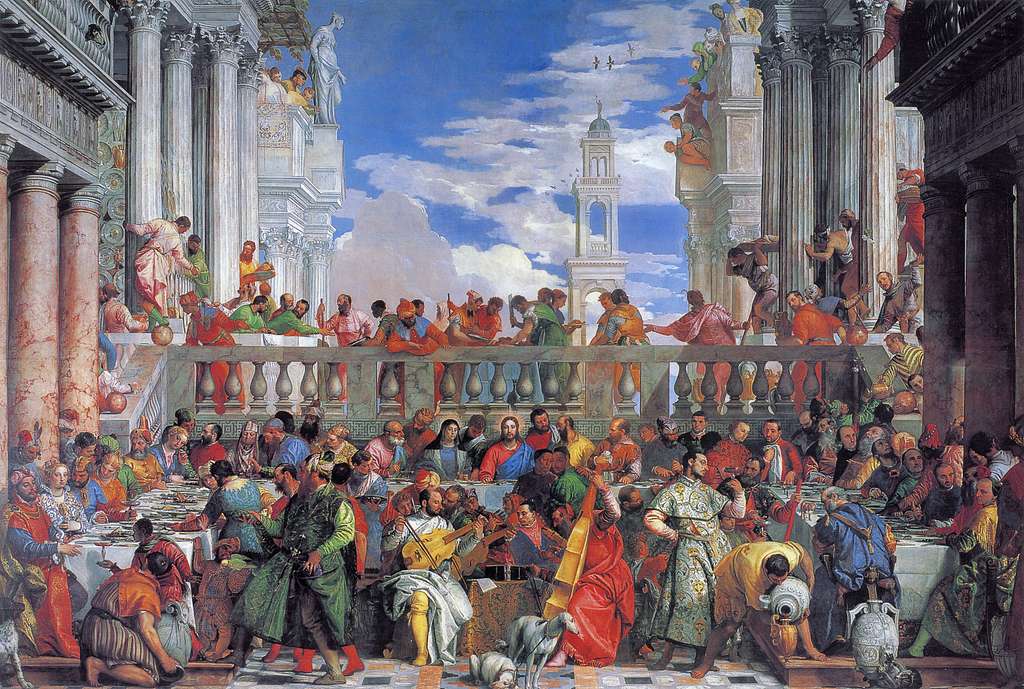
The largest painting in the Louvre (70 feet wide), this masterpiece transforms the biblical story of Jesus turning water into wine into a sumptuous 16th-century Venetian feast.
Veronese included over 130 figures, including portraits of contemporary artists and rulers, creating a magnificent panorama of Renaissance society. Look carefully, and you’ll spot musicians playing contemporary instruments and guests wearing the latest Venetian fashion.
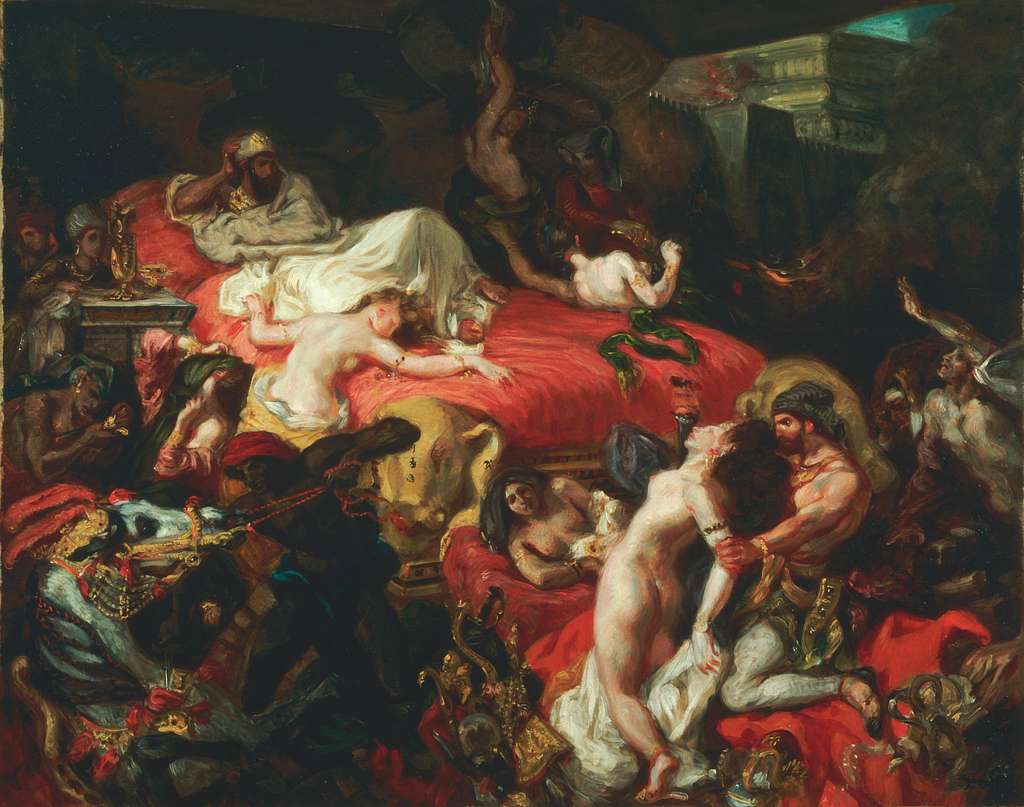
This dramatic scene depicts the legendary Assyrian king Sardanapalus watching as his possessions — including his concubines — are destroyed before his suicide.
Delacroix’s use of vibrant colors and swirling composition creates a sense of violent chaos while the king reclines almost casually amidst the destruction. The painting shocked audiences with its brutality when first exhibited in 1828.
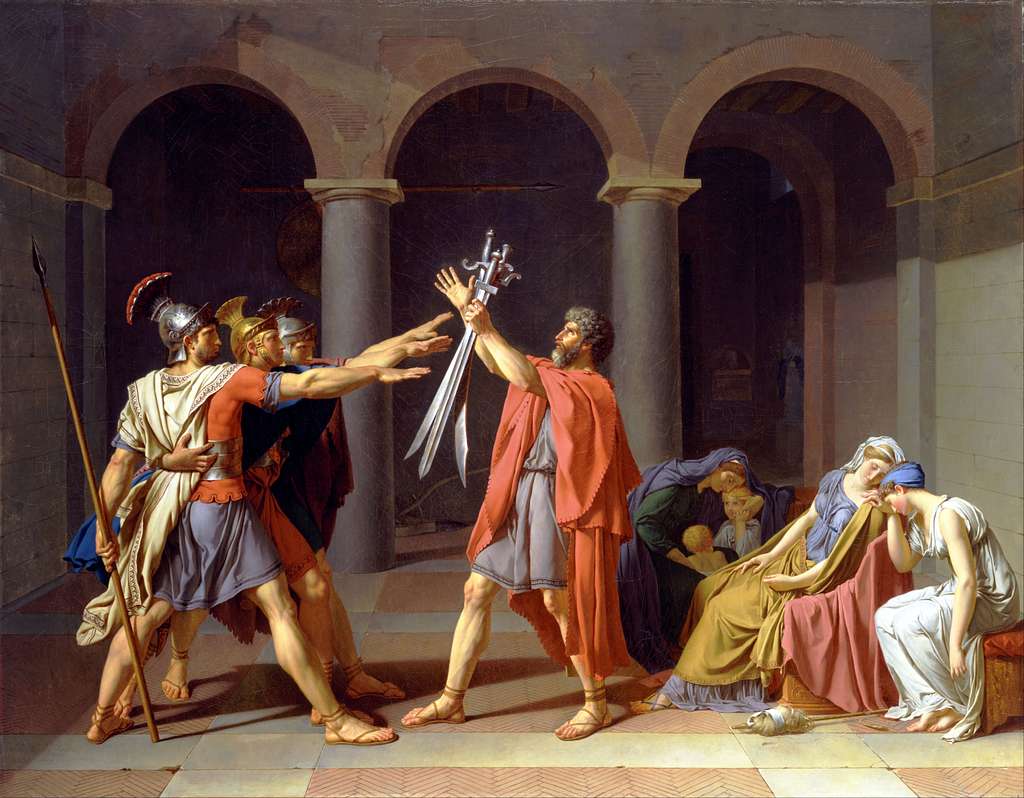
A masterpiece of Neoclassical painting, this work shows three Roman brothers swearing allegiance to Rome before combat. The stark composition, with its clear geometric lines and dramatic lighting, revolutionized history painting.
David used the ancient Roman story to comment on contemporary politics, creating an enduring symbol of patriotic sacrifice and civic duty.
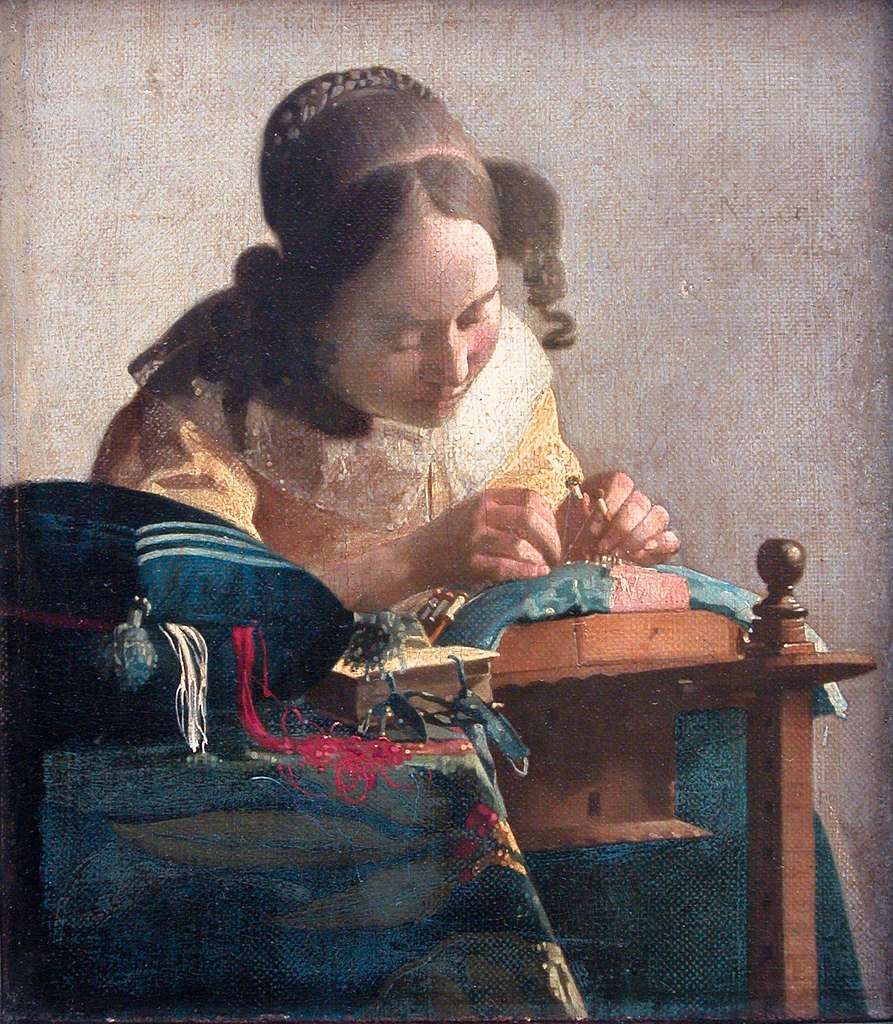
One of Vermeer’s smallest paintings, this intimate portrait showcases his mastery of light and detail. The young woman’s intense concentration as she works her bobbin lace creates a sense of frozen time, while the painting’s technical excellence appears in details like the threads spilling from her cushion and the light catching her eyelashes.
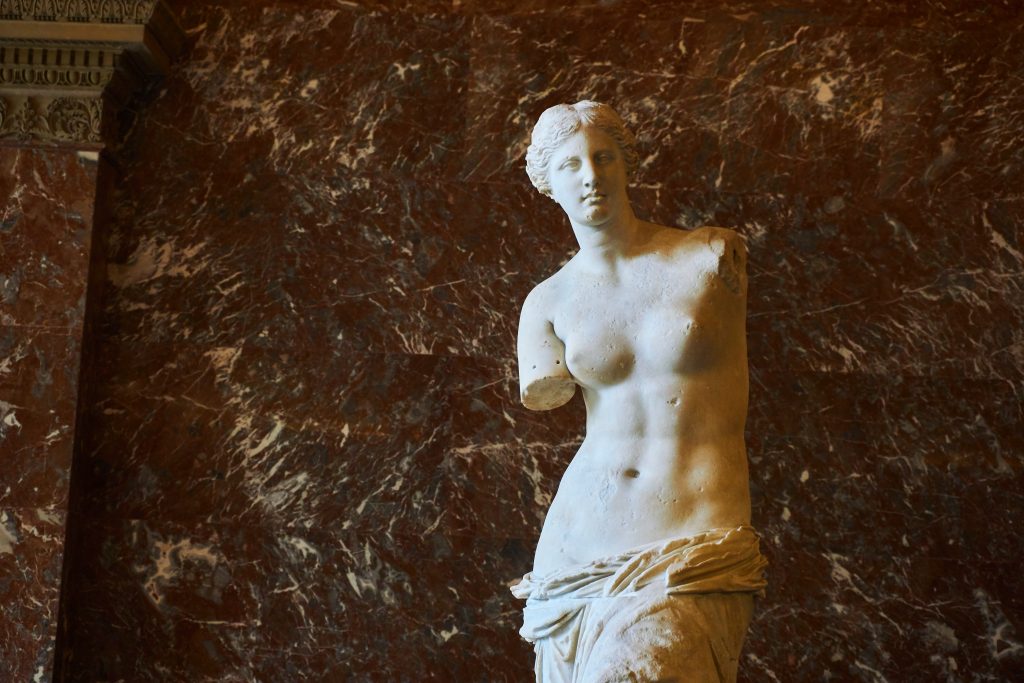
While technically a sculpture, no list of Louvre masterpieces would be complete without this iconic work. Discovered in 1820 on the Greek island of Milos, this marble statue of Aphrodite exemplifies Classical beauty ideals. Despite — or perhaps because of — its missing arms, it has become one of art history’s most recognized works.
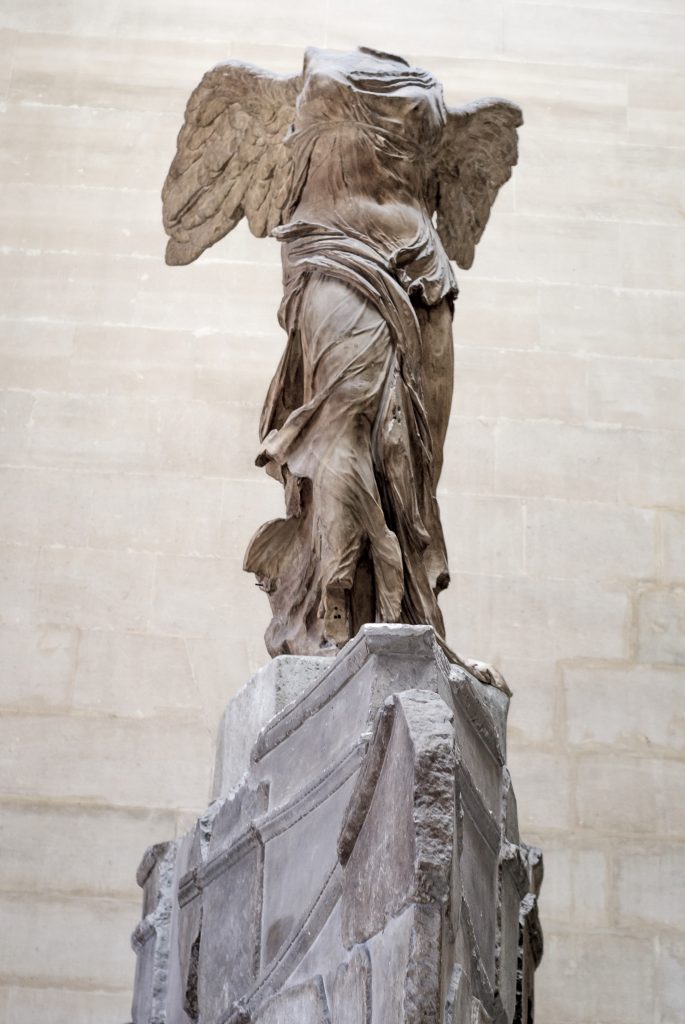
Another essential sculpture, this Hellenistic masterpiece, captures a moment of triumph as Victory alights on a ship’s prow. The windswept drapery and dynamic pose create an impression of movement that defies the marble’s weight. Its placement atop the Daru staircase makes for one of the museum’s most dramatic views.
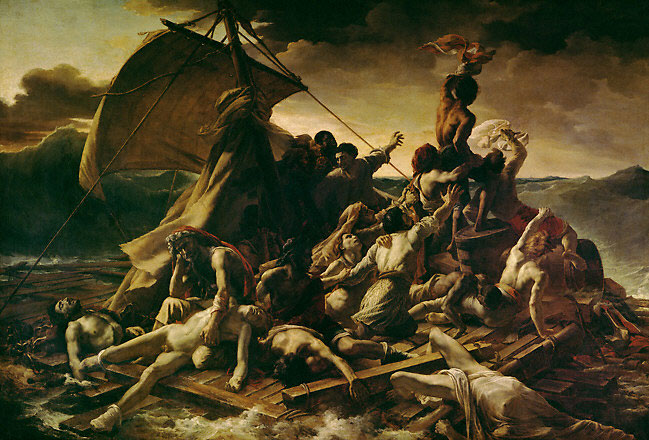
This monumental canvas depicts the tragic aftermath of the French naval frigate Méduse’s wreck in 1816, where only 15 of 147 people survived on a makeshift raft. Géricault’s masterful composition rises dramatically from despair to hope, with survivors spotting a rescue ship on the horizon.
The painting’s powerful depiction of human suffering and resilience, combined with its political critique of government incompetence, made it a defining work of French Romanticism.
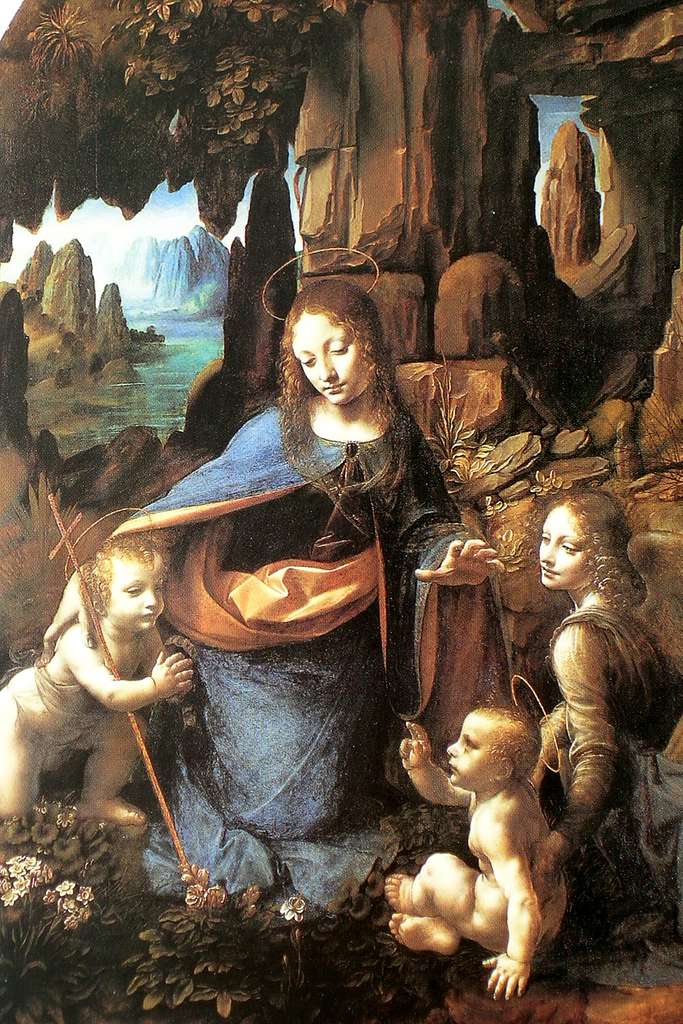
Often overlooked in favor of its more famous neighbor, this masterpiece shows Leonardo’s genius for composition and his mastery of light and shadow. The mysterious cave setting and the tender interaction between the figures create an atmosphere of both intimacy and otherworldliness.
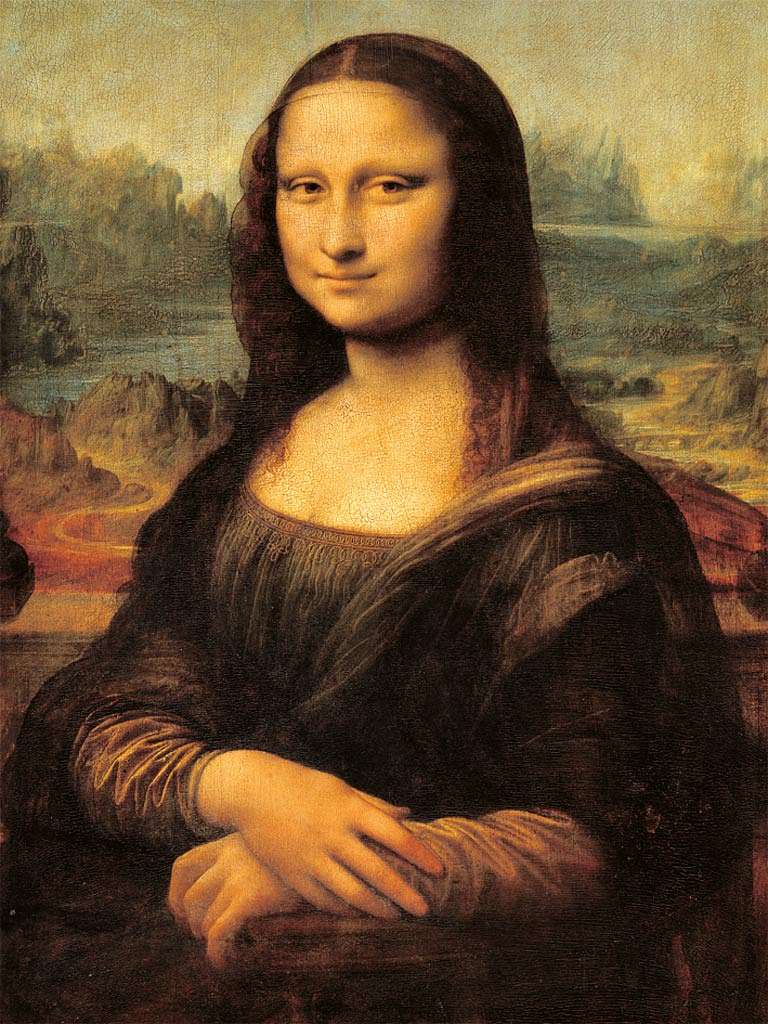
You name it, we know it — almost everyone knows the Mona Lisa. But La Gioconda deserves her fame.
Beyond the famous smile, notice Leonardo’s revolutionary atmospheric perspective in the background landscape and his sfumato technique that softens outlines. Just try to visit during off-peak hours to avoid the largest crowds.
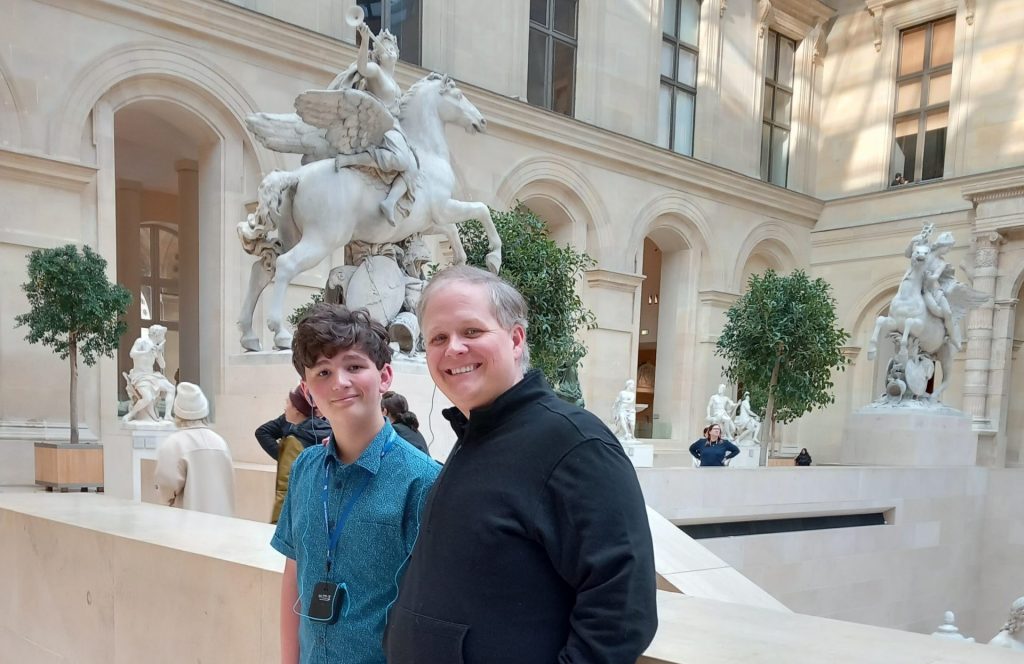
The Louvre is one of the top landmarks in Paris, so you can expect a lot of people to be there. And there’s a lot to see too — museum fatigue is a real thing.
To make your visit better, plan ahead with these practical tips.
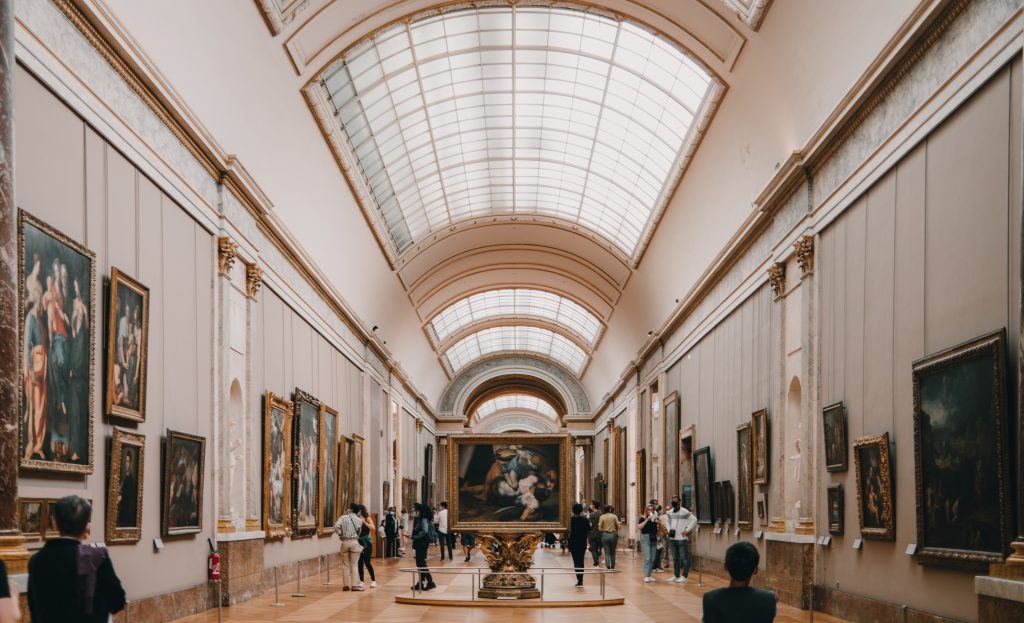
The Louvre’s masterpieces offer windows into different eras, cultures, and human experiences.
While the Mona Lisa may draw crowds, these other works deserve equal attention for their beauty, historical significance, and ability to move viewers centuries after their creation. Take time to explore beyond the obvious, and you’ll discover why the Louvre remains an inexhaustible source of artistic wonder.
Whether you’re an art enthusiast or a curious traveler, the Louvre rewards those who venture beyond its most famous residents. Consider joining a guided Louvre tour to enrich your understanding of these masterpieces and the stories behind them.
Many Paris tours include special access to the museum, allowing you to make the most of your time with these timeless works in the galleries of this magnificent museum.
 Louvre Map: A Room-by-Room Navigation Guide To Plan Your Perfect Visit
Louvre Map: A Room-by-Room Navigation Guide To Plan Your Perfect Visit
Originally a medieval fortress and later a royal castle, the Louvre has worn a few hats over the years. The one you’ll know…
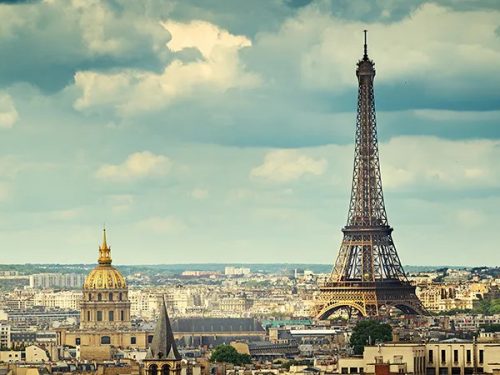 Exploring the Heart of France: Top Paris Landmarks
Exploring the Heart of France: Top Paris Landmarks
Paris always feels like a dream, even when you finally arrive. It’s this dream-come-true quality that compels Fred Astaire and Audrey Hepburn to…
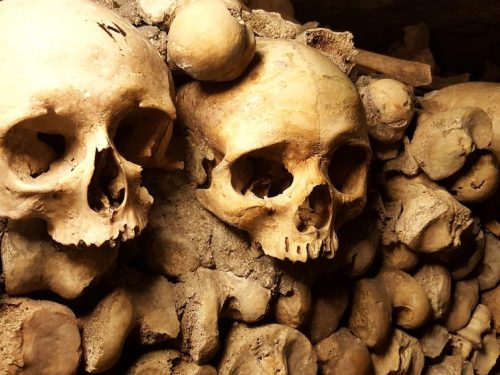 A Room-by-Room Guide to the Paris Catacombs for Tourists
A Room-by-Room Guide to the Paris Catacombs for Tourists
Paris is one of the great medieval cities of Europe. Like Rome, it has vast underlying passageways and quarries, called catacombs. This labyrinth…